How to reach here:
By Air:Bhavnagar has a domestic airport that has regular flights to the city of Mumbai and other cities in India.
By Rail:The city of Bhavnagar is well connected to all nearby cities and towns in the state through trains.
Best time to visit: October to May.
Languages spoken: Gujarati, Hindi, English.
Must eat: Khichu, Chola nu Shaak (Chickpea Curry), Sev Tameta nu Shaak, Handvo, Halvasan.
Famous Restaurants: Rasoi, Tulsi, RGB, Nilgiri.
Places you must visit:
The small town of Mahuva, locally called Kashmir of Saurashtra for its surrounding landscape is known for its coconut tree plantations. Nearby the beach, there is an age-old Bhavani Temple, a prime attraction of the tourists. The place is also the residence of the Hindu preacher Morai Bapu. Mahuva is famed for onions, groundnuts, wooden toys and jamadar mango.

Pingleshwar, a small village near Mahuva, is known for a very old Shiv Ling under the sea. It is only visible in the morning when the tide is out, accessible by a stone-paved road. Near the seashore very old baniyan trees surround the area.


The Victoria Park is a forest conserved by the Indian Government within the boundary of the Bhavnagar city. Rich in flora and fauna, the forest has varieties of Indian birds like waders, raptors and perching birds that attract bird watchers and nature admirers.The park was set up in 1888 by Maharaja Takhtasinhji of the Bhavnagar city. Bound with roads on all three sides, the park is built in a shape of a triangle. It was designed under the supervision of Councillor Mr. Proctor Sins. Thorny, scrubby, spiny and xerophytes are the vegetation mainly found in the forest. There are all together 422 plants in the Victoria Park.


The palace of Nilambag, now converted into a heritage hotel, highlights the blend of western and Indian architectural style. The palace constructed in 1859 was the personal abode of Sir Takhat Singh. A German architecture, called Mr. Sims is credited for the architectural design of the palace. In 1984, the palace was converted into a heritage hotel by Maharaja Dr. Virbhadra Singh, offering modern amenities. The palace has stepped arches, pillared porticos central courtyard, marble staircase, dining hall decorated with European chandeliers and an age-old library.
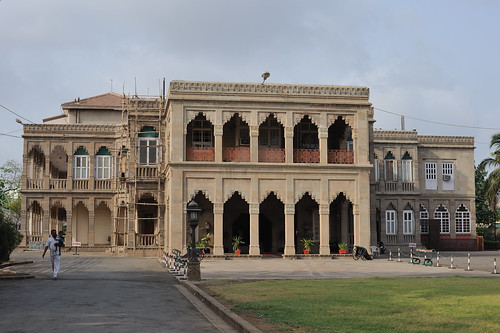

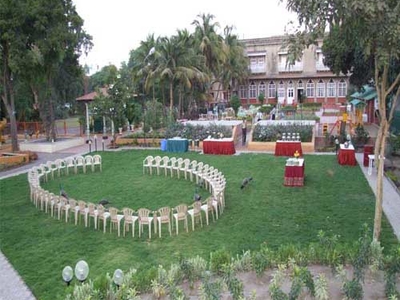
Inaugurated in the year 1955, the complex of Gandhi Smriti situated in the central part of Bhavnagar is attached to a clock tower. The Smriti has a gallery showcasing books, rare photos and memorabilia associated with the life of Mahatma Gandhi. There is also a museum of artifacts displaying items like nut cutters and religious carvings in Gandhi Smriti at Bhavnagar.Beside the museum and the picture gallery, Gandhi Smriti also presents the Khadi Gramodyog Bhandar and a library. It also houses some embellished items that are traditional and local handicrafts.



The Takhteshwar temple dedicated to Lord Shiva is visited by thousands every day. The temple was built in 1893 under the patronage of Maharaja Takhtasinhji and was named after him. Built on the top of a hillock, tourists can view the whole city and the Gulf of Khambat from the temple premise.The temple along with its whole complex is made of white marble. Tourists mainly visit the temple to worship Lord Shiva, though the site is also famed as a picnic spot. The architectural design of the temple focuses mainly on the late 19th century architectural style.

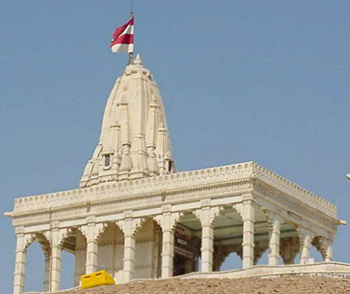
Gopnath, headquarter of the Bhavnagar District is located on the coast of Gulf of Khambhat.The site is also known for the shrine of Gopnath Mahadev, where Narsingh Mehta, the devotional poet is believed to have gained his divine experience, around 500 years ago.The coast of Gopnath is dotted with islands and limestone cliffs. Tourists enjoy a stroll along the sandy beach of the Gopnath coast. The site also features the Gopnath Bungalow, now transformed into a heritage hotel, which was the seaside retreat of the Gohil rulers of the city of Bhavnagar.



The 19th century Barton Library is one of the oldest libraries of the city. The library standing in the central part of Bhavnagar is a hub of historical and cultural significance. The Barton library is frequented mainly by the elderly people, who read magazines, newspapers and dailies to pass their time. The library houses a number of books and manuscripts in different languages.Barton Museum was also established in the 19th century. The museum houses a private collection of Colonel Barton, a prime British representative of Saurashtra. It showcases weapons, coins, agricultural implements, wood carvings and fossils. Gandhi Smriti, set on the first floor of the museum was established in 1955, a museum with picture gallery, a library and Khadi Gramodyog Bhandar.


Gangahaja is a temple dedicated to Goddess Ganga. The temple along with the entire temple premise is made of white marbles. The shrine of Gangadevi was built in 1893 under the patronage of Takhtsinghji, a maharaja of the city of Bhavnagar. The temple was built to pay honour to Maharani Majirajba. The temple designed by Sir John Griffits, attracts tourists many tourist.

The Water Lock gate of Bhavnagar is one of the prime sightseeing attractions of the tourists. The Gate was built with the purpose of maintaining the sea water level in the docks. This aids the ship to remain floating also during the low tide. Prior permissions are required to view this Lock Gate. The Lock Gate is located in a city dockyard, built 100 years ago.

Palitana, a religious city,One of the major pilgrimage centres for Jains, this destination is located at a distance of 50 km to the south-west of Bhavnagar city. The history of Palitana dates back to as early as the year 1194. It was established as a 'Second Class' princely state sprawling over an area of 777 sq km. It was one of the major states of Saurashtra.In addition to Palitana's hand weaved bamboo products, the destination is also known for its beautiful temples. The city has around 1300 temples, which are known for their intricate carvings and architecture. The unique trivia about these temples is that these have been constructed over a period of over 900 years by various generations of Jains. The construction of these temples began in the 11th century. Kumarpal Temple, Sampriti Raja Temple, Shri Adishwar Temple and the Vimalshah Temple are some of the most prominent temples, which are flocked by large influx of pilgrims every year.
One of the oldest temples present on the Shatrunjaya Teerth is the Digamber Jain temple that consists of nine shrines within itself along with various Terthankaras. The idol of the principal deity, Bhagwan Shantinath is installed in the main shrine of the temple. The idol of the deity is about 42 inch in height and was installed here in the year 1686. The idol is in the pose of Padmasana and as per the inscription on the idol, it was installed by a popular businessman from Ahmadabad.


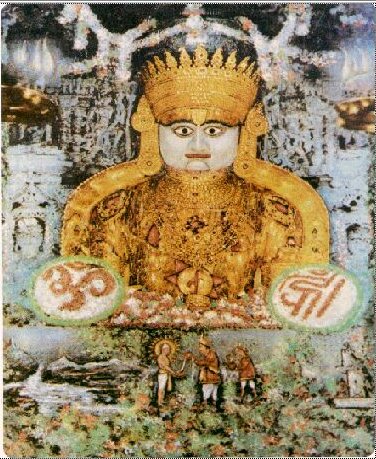
One of the largest and the most sacred temples for the Jain community is the Shatrunjay temple located at the Shatrunjay Hills, at a height of 591 m. In order to reach the temple a traveller is required to undertake a climb of about 4 km. For people dealing with physical challenges, services like lift chair or Doli are also available. On the Shatrunjay Hilltop there are a total of 863 Jain temples made of White marble and it took about 900 years. The 1st temple of Adinatha here was built by the son of the first Jain Tirthankara and it is also popular for being the spot where the Chief Disciple of Adinatha that is Pundarika attained nirvana.
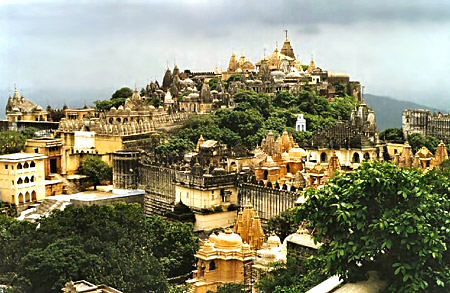

The Velavadar National Park at Velavadar, also known as Blackbuck National Park, is situated in the Bhavnagar District of Gujarat state, India. Established in 1976 in the Bhal region of Saurashtra, it is spread over an area of 34.08 sq km (square kilometer).Flat land, dry grasses and herds of antelope are the major attractions of this park. It has a unique grassland ecosystem and has been running a number of successful conservation programmes for species such as the blackbuck, wolf and lesser florican. The largest population of lesser floricans has been sustained here.The park is open throughout the year. However, the period between monsoon and winter (mid-June to March) is the ideal time to visit the place. Birdwatching enthusiasts should visit the park between December and March, when many species of migratory birds arrive to spend the winter. These include three species of harriers, lesser floricans, eagles, waders and other water birds.


No comments:
Post a Comment